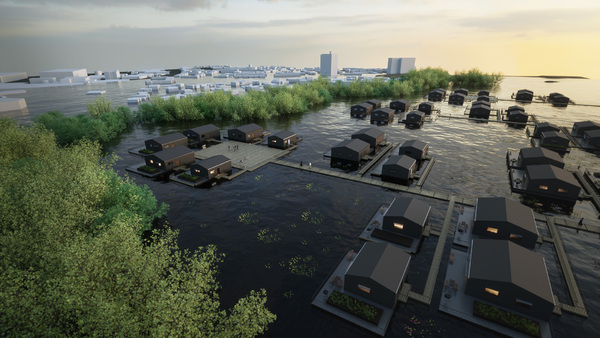The climate and biodiversity crisis are urging us to find innovative solutions when it comes to the way we design and build. With rising temperatures when it comes to global warming, it is crucial to start thinking of shifting from climate mitigation to climate adaptation measures. My project had a starting point that entailed foreseeing building and design solutions in an extreme future flooding scenario, circa 2050s and onwards, if global warming was to reach 4 degrees Celsius, the results of which would be catastrophic.
Even though the climate crisis was a starting point, other aspects such as gentrification, housing crisis and native UK species extinction were considered. The location of the site in Didsbury, one of the most gentrified areas in Manchester, where the cost of a semi-detached house can reach 1 million GBP, motivated me to find temporary accommodation solutions for overlooked communities, predominantly the Travelling community (Roma, Irish and Scottish Travellers), as their sustainable way of living could be a source of both inspiration and inclusion, and future climate refugees, whether human or non-human.
The proposed housing scheme includes 2-bedroom and 1-bedroom units optimized for low energy use and low operational carbon. Built using natural materials to minimize embodied carbon, the units are environmentally arranged to optimize daylight and maximize views of the nearby protected woodland.
The housing units are organised into clusters that accommodate extended travelling families temporarily (e. g. during school year or while working), before they resume to their travelling lifestyle during the summer. Other housing units are dispersed, to accommodate climate refugee families, couples or single individuals.
In addition, each housing unit is equipped with a ‘Habitat Wall’ and a garden/allotment, that accommodate the endangered Pipistrelle bats, Great Crested Newts, as well as other species of insects, birds and toads, as a response to the biodiversity crisis.


